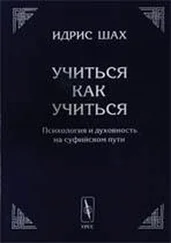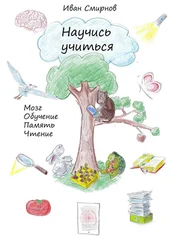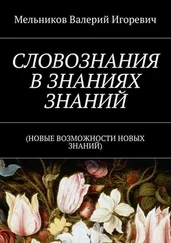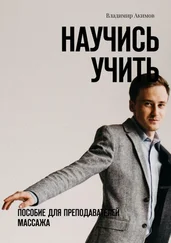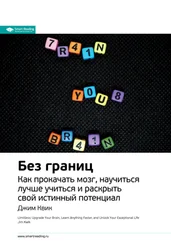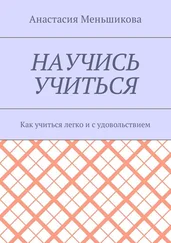27. Michael Baigent, Richard Leigh, and Henry Lincoln, Holy Blood, Holy Grail (New York: Dell, 2007).
28. Douglas Hofstadter and Emmanuel Sander, Surfaces and Essences: Analogy as the Fuel and Fire of Thinking (New York: Basic Books, 2013). Эта книга оказалась очень ценным ресурсом.
29. Подробности — и слоган — о школах высоких технологий см.: Bob Pearlman, «Educational Leadership, Customizing Our Schools: Reinventing the High School Experience», ASCD, 2016. Также см.: Tara S. Behrend et al., «Gary and Jerri-Ann Jacobs High Tech High: A Case Study of an Inclusive STEM-Focused High School in San Diego, California», OsPrl Report 2014–2003.
30. Katie Hafner, «For Second Opinion, Consult a Computer?» New York Times, December 3, 2012, http://www.nytimes.com/2012/12/04/health/quest-to-eliminate-diagnostic-lapses.html(дата обращения: 26.09.2016).
31. G. Pуlya and John H. Conway, How to Solve It: A New Aspect of Mathematical Method , 2nd ed. (Princeton, NJ: Princeton University Press, 2014). Также см.: Lee Dembart, «George Pуlya, 97, Dean of Mathematicians, Dies», Los Angeles Times, September 08, 1985, http://articles.latimes.com/1985-09-08/news/mn-2892_1_polya-george-mathematician(дата обращения: 16.09.2016).
32. Bernard Roth, The Achievement Habit: Stop Wishing, Start Doing, and Take Command of Your Life (New York: HarperCollins, 2015), и Tara Parker-Pope, «'Design Thinking' for a Better You», New York Times, Well section, January 4, 2016, http://well.blogs.nytimes.com/2016/01/04/design-thinking-for-a-better-you/(дата обращения: 16.09.2016).
Также использовано в этой главе
Burger, Edward B., and Michael Starbird. The 5 Elements of Effective Thinking , Kindle edition. Princeton NJ: Princeton University Press, 2012.
Chi, Michelene T. H., P. J. Feltovich, and R. Glaser. «Categorization and Representation of Physics Problems by Experts and Novices.» Cognitive Science 5, no. 2 (1981): 121–52.
Cho, Young Hoan, and Kwangsu Cho. «Peer Reviewers Learn from Giving Comments.» Instructional Science 39, no. 5 (September 2011): 629–643. doi:10.1007/s11251-010-9146-1.
Fischer, David Hackett. Historians' Fallacies: Toward a Logic of Historical Thought , 1st ed. New York: Harper & Row, Publishers, 1970.
Foshay, Rob, and Jamie Kirkley. «Principles for Teaching Problem Solving.» Technical Paper 4. Bloomington, MN: Plato Learning, 2003.
Goldstone, Robert L., and Samuel B. Day. «Introduction to 'New Conceptualizations of Transfer of Learning.'» Educational Psychologist 47, no. 3 (2012): 149–52. doi:10.1080/00461520.2012.695710.
Hofstadter, Douglas, and Emmanuel Sander. Surfaces and Essences: Analogy as the Fuel and Fire of Thinking . 1st ed. New York: Basic Books, 2013.
Jee, Benjamin D., et al. «Finding Faults: Analogical Comparison Supports Spatial Concept Learning in Geoscience.» Cognitive Processing 14, no. 2 (May 2013): 175–87. doi:10.1007/s10339-013-0551-7.
Kiewra, Kenneth A. «Using Graphic Organizers to Improve Teaching and Learning.» IDEA Paper #51. IDEA Center, Inc. (2012). http://eric.ed.gov/?id=ED565284.
Kilpatrick, Jeremy. «Pólya on Mathematical Abilities.» The Mathematics Educator 21, no. 1 (2011). http://tme.journals.libs.uga.edu/index.php/tme/article/view/229.
Kirkley, Jamie. «Principles of Teaching Problem Solving.» Technical Paper 4. Bloomington, MN: Plato Learning, 2003.
Lederman, Eric. «Journey into Problem Solving: A Gift from Pólya.» The Physics Teacher 47, no. 2 (2009): 94. doi:10.1119/1.3072455.
Nesbit, John C., and Olusola O. Adesope. «Learning with Concept and Knowledge Maps: A Meta-Analysis.» Review of Educational Research 76, no. 3 (2006): 413–448.
Novak, Joseph D. Learning, Creating, and Using Knowledge: Concept Maps as Facilitative Tools in Schools and Corporations. London: Routledge, 2010.
Novak, Joseph D., and Alberto J. Cañas. «The Theory Underlying Concept Maps and How to Construct and Use Them.» Technical Report. Institute for Human and Machine Cognition (2008). http://eprint.ihmc.us/5/.
Paletz, Susannah B. F., Joel Chan, and Christian D. Schunn. «Uncovering Uncertainty through Disagreement.» Applied Cognitive Psychology 30, no. 3 (2016): 387–400.
Parrotta, Pierpaolo, Dario Pozzoli, and Mariola Pytlikova. «Does Labor Diversity Affect Firm Productivity?» IZA Discussion Paper no. 6973 (2012). http://papers.ssrn.com/sol3/papers.cfm?abstract_id=2173663.
Paul, Richard, et al. Critical Thinking Handbook: 4th–6th Grades: A Guide for Remodeling Lesson Plans in Language Arts, Social Studies, and Science. Rohnert Park, CA: Center for Critical Thinking, 1990.
Pólya, George. «On Learning, Teaching, and Learning Teaching.» The American Mathematical Monthly 70, no. 6 (1963): 605–19.
Singh, Indra Sen, and Karren Moono. «The Effect of Using Concept Maps on Student Achievement in Selected Topics in Chemistry at Tertiary Level.» Journal of Education and Practice 6, no. 15 (2015): 106–116.
Willingham, Daniel T. «Critical Thinking: Why Is It So Hard to Teach?» Arts Education Policy Review 109, no. 4 (2008): 21–32.
1. David Shariatmadari, «Daniel Kahneman: 'What Would I Eliminate If I Had a Magic Wand? Overconfidence,'» The Guardian , July 18, 2015, https://www.theguardian.com/books/2015/jul/18/daniel-kahneman-books-interview(дата обращения: 07.10.2016).
2. Art Markman, Smart Thinking: Three Essential Keys to Solve Problems, Innovate, and Get Things Done (New York: Penguin, 2012).
3. Alan D. Castel, Michael Vendetti, and Keith J. Holyoak, «Fire Drill: Inattentional Blindness and Amnesia for the Location of Fire Extinguishers», Attention, Perception, & Psychophysics 74, no. 7 (October 2012): 1391–96, doi:10.3758/s13414-012-0355-3.
4. Ulrich Boser, «We're All Lying Liars: Why People Tell Lies, and Why White Lies Can Be OK», US News & World Report , May 18, 2009, http://health.usnews.com/health-news/family-health/brain-and-behavior/articles/2009/05/18/were-all-lying-liars-why-people-tell-lies-and-why-white-lies-can-be-ok(дата обращения: 14.09.2016).
5. Также о непреднамеренной слепоте: Christopher F. Chabris et al., «You Do Not Talk about Fight Club If You Do Not Notice Fight Club: Inattentional Blindness for a Simulated Real-World Assault», i-Perception 2.2 (2011): 150–153. Also Daniel Kahneman, Thinking, Fast and Slow (New York: Farrar, Straus and Giroux, 2011).
6. Shana K. Carpenter, Miko M. Wilford, Nate Kornell, and Kellie M. Mullaney, «Appearances Can Be Deceiving: Instructor Fluency Increases Perceptions of Learning without Increasing Actual Learning», Psychonomic Bulletin & Review 20, no. 6 (2013): 1350–1356.
7. Major Timothy M. Karcher, Understanding the Victory Disease: From the Little Bighorn to Mogadishu and Beyond (San Francisco: Squibd, Pickle Partners Publishing, 2015).
8. Gates, Business @ the Speed of Thought: Succeeding in the Digital Economy (New York: Grand Central Publishing, 1999).
9. Подробности о бейсбольных судьях и их работе см.: Brian Mills, Technological Innovations in Monitoring and Evaluation: Evidence of Performance Impacts among Major League Baseball Umpires , Working Paper, 2015, и Ben Lindbergh, «Rise of the Machines?» Grantland, November 8, 2013. http://grantland.com/features/ben-lindbergh-possibility-machines-replacing-umpires/(дата обращения: 07.10.2016). Цитата из Деллинджера дана по: Noah Davis, «Umpires Are Less Blind Than They Used to Be», FiveThirtyEight , August 19, 2015, http://fivethirtyeight.com/features/umpires-are-less-blind-than-they-used-to-be/ (дата обращения: 07.10.2016).
Читать дальше
Конец ознакомительного отрывка
Купить книгу
![Ульрих Бозер Как научиться учиться [Навыки осознанного усвоения знаний] обложка книги](/books/394994/ulrih-bozer-kak-nauchitsya-uchitsya-navyki-osoznan-cover.webp)

